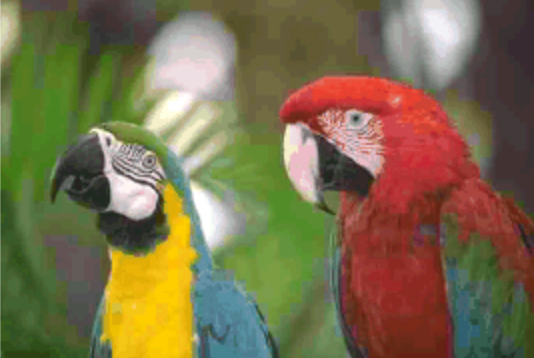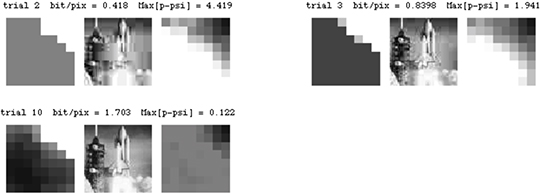|
|
 |

|
 |
 |
| Optimizing DCT Image Compression for the Human Viewer (Andrew B. Watson & Albert J. Ahumada, Jr.) |
 |
Overview
The next era of space exploration, especially the "Mission to Planet Earth" will generate immense quantities of image data. For example, the Earth Observing System (EOS) is expected to generate in excess of one terabyte/day. NASA confronts a major technical challenge in managing this great flow of imagery: in collection, pre-processing, transmission to earth, archiving, and distribution to scientists at remote locations. Expected requirements in most of these areas clearly exceed current technology. Part of the solution to this problem lies in efficient image compression techniques.
For much of this imagery, the ultimate consumer is the human eye. In this case image compression should be designed to match the visual capacities of the human observer. We have developed two techniques for optimizing image compression for the human viewer. The first consists of a formula, developed jointly with IBM and based on psychophysical measurements, that computes a DCT quantization matrix for any specified combination of viewing distance, display resolution, and display brightness. This DCT quantization matrix is used in most recent standards for digital image compression (JPEG, MPEG, CCITT H.261). The second technique optimizes the DCT quantization matrix for each individual image, based on the contents of the image. This is accomplished by means of a model of visual sensitivity to compression artifacts. Together these two techniques will allow systematic perceptual optimization of image compression in NASA imaging systems.

Figure 1. An image compressed by a factor of 100 using DCTune algorthms. The original image is 512x768, and its was compressed for a display visual resolution of 64 pixels/deg. To view a full color and resolution version, click on the image.

Figure 2. The figure shows several steps in the progressive optimization of an image. Each row shows: the quantization matrix (left), the compressed image (middle), and the matrix of perceptual errors (right). The optimization seeks a uniform perceptual error matrix.
Contact
Albert J. Ahumada, Jr.
(650) 604-6257
Albert.J.Ahumada@nasa.gov> |
|
|
|
|